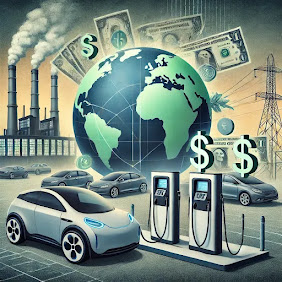Why EV subsidies do not meet climate goals: Global Perspective
The transition to electric vehicles (EVS) is regarded as a critical step towards achieving global climatic goals. However, government subsidies for EV often do not have a significant impact. Why is this happening in the US, Europe, Asia and Africa?
The reality behind the EV subsidies
1. Insufficient financial incentives:
Despite the fact that the average EV subsidy in the United States is about $ 7,500, it barely offset the higher costs of EWS compared to vehicles of internal combustion engine. In Europe, subsidies depend on the country, but often focus on the richest buyers, not consumers of the mass market.
2. Infrastructure problems:
Without proper charging stations in cities such as Los -Angeles, Berlin, Lagos or Mumbai, the adoption of EV remains uncomfortable. Nations that are developing with even larger gaps on infrastructure, slowing down progress.
3. Ecological paradox:
Battery battery production (eg, lithium, cobalt) threatens ecosystems. As the engineer -climate Sara Collins points out:
"We move emissions from the tail pipe to the mine, and the planet still pays the price."
4. Hidden costs and real numbers:
Replacing EV battery on average $ 4000 - $ 20,000.
Global sales EV are only 15% of the total number of cars sales as of 2024.
Fossil fuel subsidies remain 7 times higher than the renewable energy worldwide, the International Energy Agency (IEA) reports.
5. Regional differences:
In Africa and Asian parts, subsidy to EV is scarce and the power supply is unreliable, which limits the adoption even more.
What can be done?
Focus on accessibility subsidies: To provide priority for low income households.
Expand charging infrastructure: Encourage public-private partnership to create available charging networks.
Support the battery innovation: Invest in stable low -impact batteries.
Teach consumers: to clarify the overall cost savings, including fuel and service.
According to EV owner James H., American consumer:
"I have chosen EV because of lower costs, but in advance the costs and lack of chargers made a difficult decision."
The climate clock is pouring. Governments and industries must overcome the gap between subsidies and actual accessibility to achieve a greener future.




Comments
Post a Comment